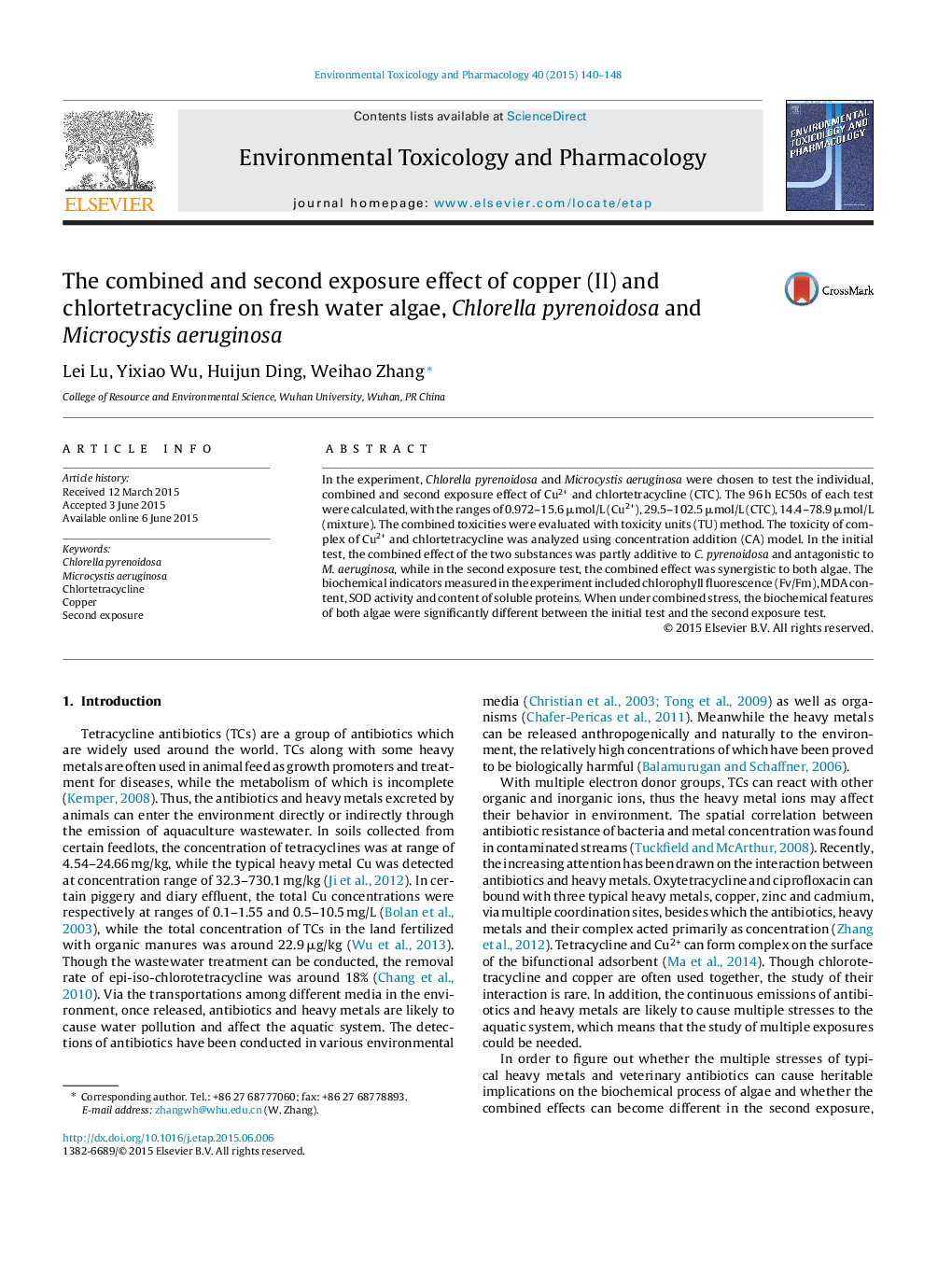| Article ID | Journal | Published Year | Pages | File Type |
|---|---|---|---|---|
| 2582958 | Environmental Toxicology and Pharmacology | 2015 | 9 Pages |
•The combined toxicity of copper and chlortetracycline on two algae was analyzed.•The biochemical features of both algae were different in the second exposure.•The toxicity of the complex on algae was analyzed in initial and second exposure.•There are significant differences of 96 h EC50s between initial and second exposure.
In the experiment, Chlorella pyrenoidosa and Microcystis aeruginosa were chosen to test the individual, combined and second exposure effect of Cu2+ and chlortetracycline (CTC). The 96 h EC50s of each test were calculated, with the ranges of 0.972–15.6 μmol/L (Cu2+), 29.5–102.5 μmol/L (CTC), 14.4–78.9 μmol/L (mixture). The combined toxicities were evaluated with toxicity units (TU) method. The toxicity of complex of Cu2+ and chlortetracycline was analyzed using concentration addition (CA) model. In the initial test, the combined effect of the two substances was partly additive to C. pyrenoidosa and antagonistic to M. aeruginosa, while in the second exposure test, the combined effect was synergistic to both algae. The biochemical indicators measured in the experiment included chlorophyll fluorescence (Fv/Fm), MDA content, SOD activity and content of soluble proteins. When under combined stress, the biochemical features of both algae were significantly different between the initial test and the second exposure test.
